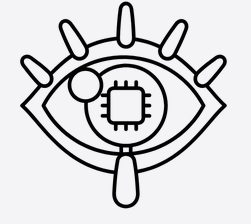Architectural Overview
Core Architectural Principles
- Performance-First Design: Optimized for ultra-low latency in critical trading paths
- Distributed Processing: Microservices with event-driven communication
- Scalable Components: Independently scalable services to handle varying loads
- Resilient Operations: No single points of failure across the system
- Comprehensive Observability: Real-time monitoring and diagnostics
Touch-Fire's system architecture represents a careful balance between modern cloud-native principles and the stringent performance requirements of financial trading systems. We've created a hybrid approach that delivers the scalability and resilience of cloud technologies while maintaining the ultra-low latency required for high-frequency trading.
Architectural Transformation
From 2019 to 2022, Touch-Fire underwent a major architectural transformation to embrace cloud-native principles while preserving our market-leading latency.
This journey was triggered by the need to support both high-frequency trading clients and retail-facing crypto exchange platforms with thousands of account opening requests per hour and tens of thousands of users requiring price information.
The result is a best-of-both-worlds solution that combines the reliability and scalability of modern cloud architectures with the performance characteristics required for financial markets.
Digital Twin Observability
Our system monitoring is based on a digital twin approach to observability, using OpenTelemetry standards, service mesh integration, and self-registration of components:
- Comprehensive Monitoring: Real-time visibility into the entire system
- Unified Management Console: Integrated application and infrastructure controls
- Centralized Logging: Aggregated logs with advanced search and correlation
- Distributed Tracing: End-to-end transaction visibility across services
- Automated Failover: Instant failover of stateful services based on digital twin state
This approach provides unprecedented visibility into system behavior and enables rapid problem diagnosis, performance optimization, and automated remediation.
Time Management and Scheduling
Financial markets operate across multiple time zones, calendars, and session types. Our architecture includes sophisticated time management capabilities:
Multiple Calendars
Support for exchanges operating on different holiday calendars, with automated session management and scheduling adjustments.
Multiple Time Zones
Global time zone support for markets operating in different regions, with automatic DST handling and time zone conversion.
Multiple Session Types
Support for daily sessions (futures), intra-day sessions (equities), and week-long sessions (crypto/FX) with appropriate processing models.
“Time-Travel” Capability
Support for calendar testing in the future and process re-runs in the past, with temporal database designs for comprehensive audit trails.
DevOps and Continuous Delivery
Our architectural transformation included a major evolution in our development and deployment practices:
Modern Development Practices
- Shift-Left Testing: Testing integrated early in the development process
- Behavior-Driven Design: Requirements expressed as testable scenarios
- Comprehensive Mocking: All external dependencies can be simulated for testing
- Automated Security Scanning: SAST and DAST analysis in CI/CD pipelines
- Structured Dependency Management: Version controlled libraries and frameworks
- Containerized Deployment: Consistent execution environments across all stages
- Automated Configuration: Environment-specific settings managed through code
These practices ensure consistent quality, rapid delivery, and secure deployment across all our systems, with full traceability from requirements to production.






